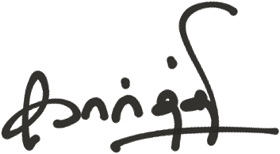Apr 12, 2025
Circle of Curiosity
My biggest reflection of life till 2024 is that I am so busy with circle of competence that I hardly have time to explore the circle of curiosity. In 2025, I deliberately spend time to explore my curiosity on a weekly basis.
This week I serendipitously bumped into the incredible BBC documentaries — “Everything and Nothing” — and was completely hooked. I sat through both episodes without blinking. It was like being a child again, asking big questions and being amazed at every turn, as Prof. Jim Al-Khalili takes you through the mind-bending journey of how we came to understand our universe.
It all begins with a simple, child like question — “Why is the night sky dark?” That question gave birth to what’s called Olbers’ Paradox, and the answer changed everything. It turns out, the night sky isn’t lit up with stars in every direction because the universe is not infinitely old, and light takes time to travel. Some stars are so far away that their light hasn’t reached us yet. That dark sky is actually evidence of a beginning.
Then enters Edwin Hubble, who looked through a telescope and saw something no one expected — galaxies moving away from us. This wasn’t a quiet, static universe. It was expanding. That discovery gave birth to the Big Bang Theory — the idea that everything we know came from a single, hot, dense point. Time, space, matter — all of it erupted into being 13.8 billion years ago.
But that was just the beginning of the wonder.
We learned about dark matter, which we can’t see, but which holds galaxies together. And dark energy, which is pushing the universe apart faster and faster. We’re surrounded by invisible forces we still don’t fully understand.
And then the film flips the question: What is nothing? We once thought it meant emptiness. A vacuum. Silence. But quantum physics tells us — even in absolute nothing, there is something.
Particles appear and disappear in tiny flashes. Space itself is alive with activity. Dirac imagined a “sea” of invisible particles filling all space — a hidden structure beneath what we call empty.
Experiments even showed that two metal plates in a vacuum would move slightly because of the energy in the “nothing” between them. It’s called the Casimir Effect.
And then the biggest twist — it’s possible that the universe came from nothing. A tiny fluctuation in the vacuum. A quantum ripple. And boom — everything.
Even now, we’re still asking: What came before the beginning? What lies beyond the edge? Why is there something instead of nothing?
I finished the documentaries feeling so small, and yet so inspired. We are stardust, with questions. We are a speck of dust that somehow figured out galaxies, time, and quantum foam.
What a miracle to be human. What a joy to be curious.

